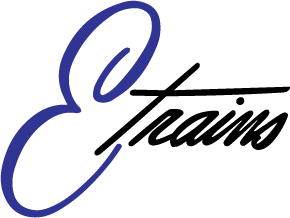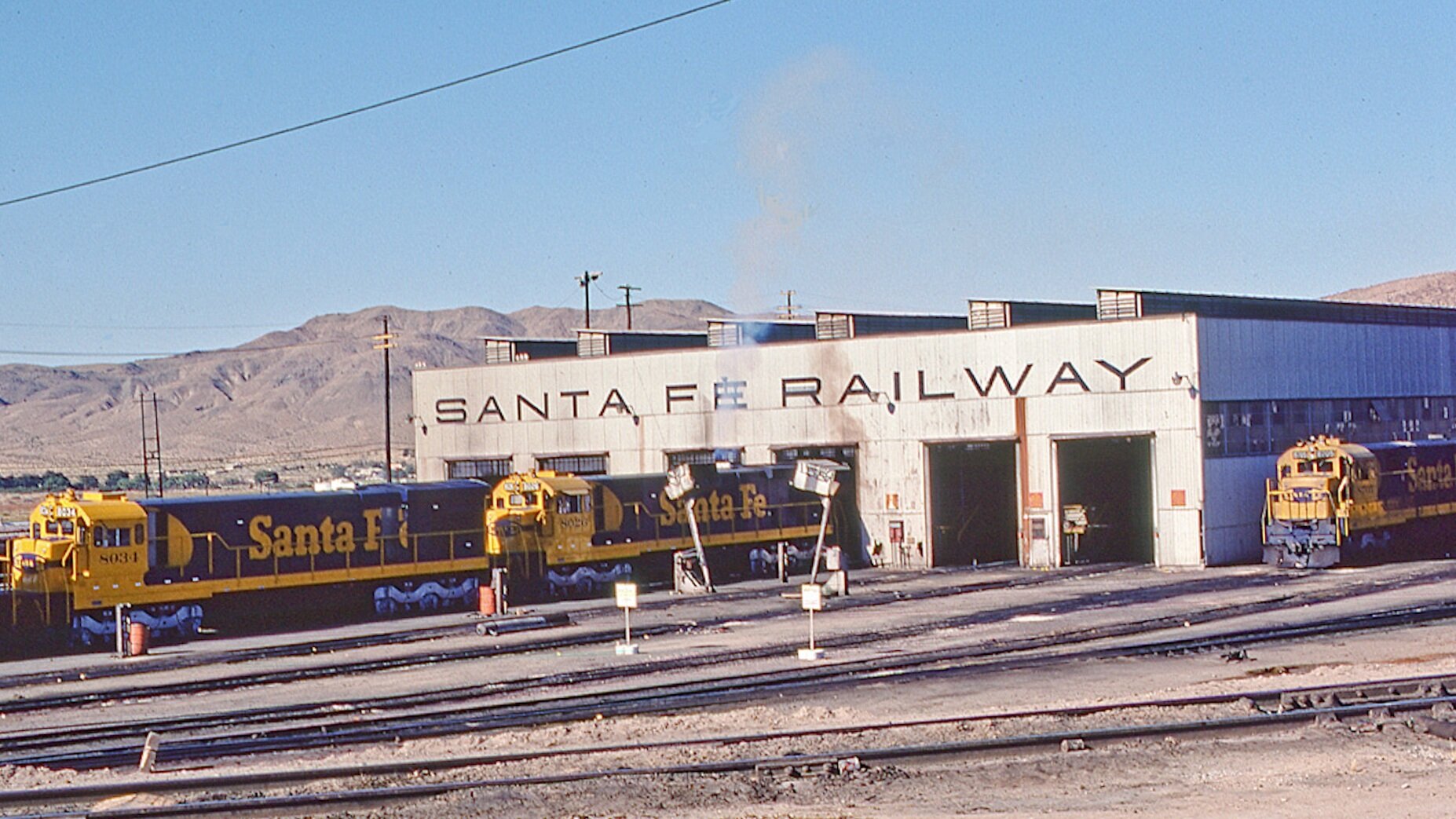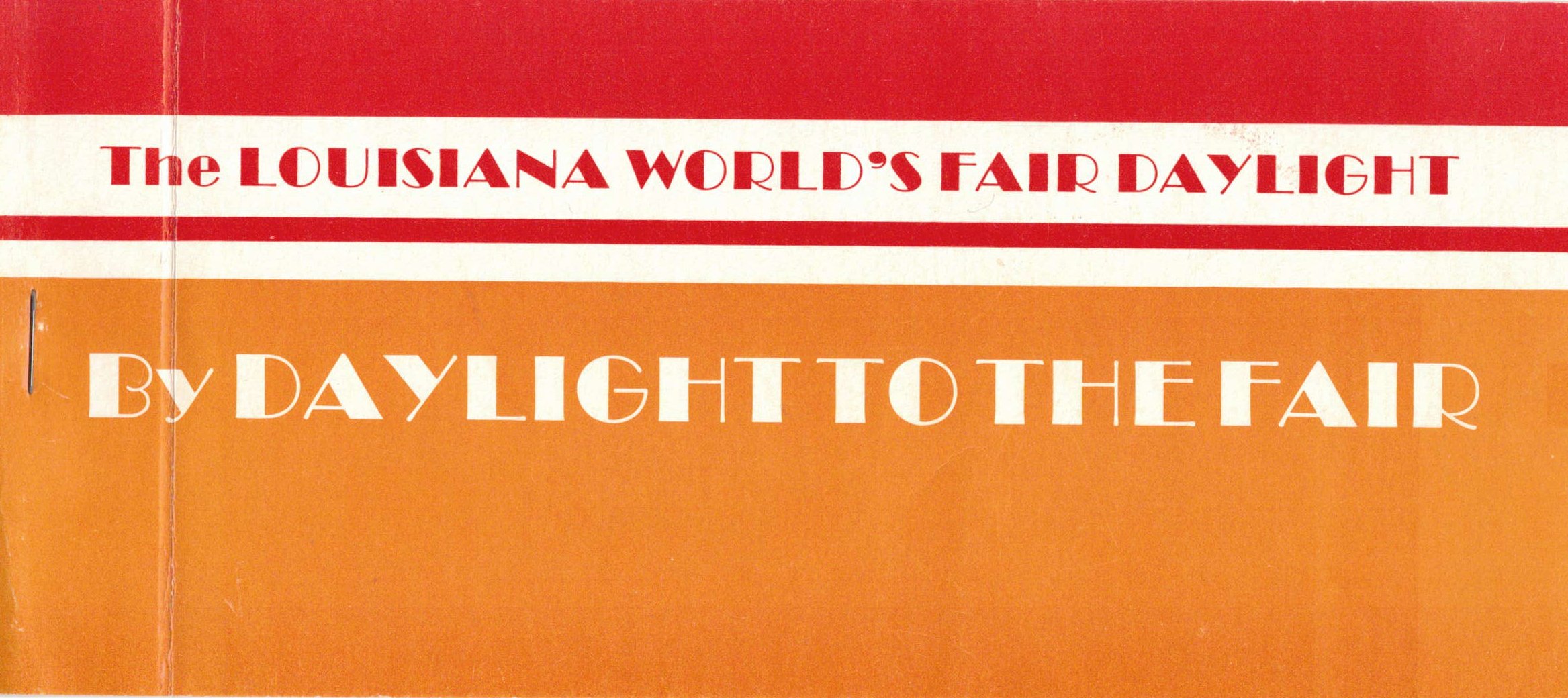

Meet the Man Behind Pentrex
Michael W. Clayton
The Men From Pentrex
Michael Clayton (left) and Tom Hughes (right) in Oakland CA awaiting the SP 4449 as it steams to Southern California for the filming of Tough Guys. March 8, 1986
Photo Credit: Phil Gosney
Q. When did you become interested in trains?
A fellow student at California State University Fullerton was into trains. His goal was to graduate with a degree and work for the Santa Fe. That was Tom Hughes. His dream came true by being hired by the Santa Fe, spending his entire career with the railroad. He started as a clerk and progressed to becoming a dispatcher in San Bernardino, where he was known as the “Hillmaster” while handling trains over the famous Cajon Pass. Moved to Chicago and worked at Corwith and Willow Springs then retired in Fort Worth as Manager of Locomotive Utilization.
While still in college we visited Cajon Pass and the Tehachapi Loop. At the loop, I was introduced to the Santa Fe 9800 class Alligators in action. Southern California has many railfanning locations so there was a wide variety of railroading to become familiar with.
I was also fortunate to find a job in my field after receiving my degree. But it came as quite a shock to find out it would require moving to Barstow. At this time the big hump yard was being built so there was non-stop railroad action at this busy rail location.
Q. Did you know from the start you would be getting into a career about trains?
No, not at all (laughs). After I graduated college from California State University Fullerton, my first job was as a Producer and Director for the Jet Propulsion Lab of Pasadena with the Deep Space Network. The only negative to this great job was that it required moving to Barstow, California, since their television studios were 50 miles out in the Mojave Desert. This was where their Goldstone Deep Space Communications Complex was located.
Q. What was it like in Barstow?
My daily commute via carpools included traveling along the First Avenue Bridge, which crosses above the Santa Fe tracks. There were great views of the yards, depot, Harvey House and Locomotive Shops. The Harvey House was built in 1911 as the Casa del Desierto. Then to the west, there was a view of the Barstow Hump Yard being built. It was definitely a busy railroad transition time to live in Barstow. Everyday there was new railroad action to see both in the morning and evening.
Photo credit: Craig Walker
Photo Credit: John Wiesmann
Often, in the evenings, I would head over to the yards to watch Santa Fe's hotshot freight, the Super C, arrive in town on its westward journey for a crew change and a fresh set of power for the run to Los Angeles. The operation was fast paced. It was fun to watch everyone jump into action as the train pulled into the yards near the depot. Often there would be one of Santa Fe's business cars on the end carrying an official on board for the quickest way to cross the country.
Q. What happened after Barstow?
Eventually I relocated to JPL in Pasadena to work on the Mars Viking program. After JPL, I worked for Robert Bosch-Fernseh of Germany. They manufactured television cameras and Type “B” one inch video recorders. They were the leaders in the industry at that time and their tape decks were the choice of production houses and film to tape facilities in Hollywood. Fernseh also had a long history of supplying complete systems for World Cup Soccer and the Olympics.
Fernseh cameras were also used at the Rose Bowl for the worldwide broadcast of the Rose Bowl Game. Here, you can see a camera behind Dick Enberg and Merlin Olsen.
For the next dozen years I worked for Thomson-CSF of France as their Western Regional Sales Manager servicing the 13 western states. A major development at this time was that Thomson-CSF was chosen as the equipment manufacturer for the 1980 Summer Olympic games which maximized their manufacturing facilities. During this time Thomson-CSF and Sony entered into an agreement to produce the first broadcast-quality standalone camera, the Betacam. Thomson-CSF supplied the camera technology and Sony provided the manufacturing expertise.
At the National Association of Broadcasters convention in Las Vegas in 1984, the first Betacams were available for demo and sales. I left the convention and flew to meet my friend Tom Hughes in Portland, Oregon with one of the first Betacams. The spectacular Daylight 4449 was due to start its epic journey to the World’s Fair in New Orleans. Little did I imagine it would be a life changing experience!
Q. When was Pentrex started?
While I was working as the sales manager, I started Pentrex. I had the best job in the world, but after producing a few railroad videos, things got out of control. Pentrex exploded into the marketplace!
By Daylight To The Fair
In May of 1984 two college friends met in Portland, Oregon, for the departure of the SP 4449 as the Daylight with a matching train set began its journey to the World’s Fair in New Orleans. The turnout of locals and railfans was overwhelming as “The World’s Most Beautiful Train” rolled out of Union Station.
The crowds blocked all streets & freeway overpasses that provided spectacular views of the train. The Highway Patrol could only stand back in amazement as the mass of spectators positioned themselves to capture run bys and pace alongside whenever possible.
Fortunately, experienced railroad employee Thomas Hughes was in charge of positioning our rental car to view this once in a lifetime event. Michael Clayton had just arrived in Portland from the NAB (National Association of Broadcasters) conventions in Las Vegas, He had with him one of the first Sony Betacam cameras. A state of the art, all one piece, broadcast quality camera. With Tom driving and Mike shooting video we were in for the wildest ride either of us had experienced. After a day of runbys, pacing, and documenting the event, the train spent its first night in Klamath Falls, OR.
After returning our rental car we climbed aboard for the 4449’s next leg to Sacramento. The train was full of happy fans that were lucky enough to secure tickets for the sold out trip. At each stop crowds amassed trackside. Southern Pacific made sure the public knew the train schedule. Also all local TV crews were on hand to record this historic event.
Along the way our Betacam became a “celebrity” since no local TV stations had such a sophisticated camera yet. They were all still using a camera with a portable Sony Umatic recorder, a heavy two man set up.
Many times I was asked about my camera and which network was I shooting for. Wanting to learn more about the camera, they couldn’t understand I was just shooting for fun.
After two full days of railfanning the Daylight was due to layover in Sacramento for maintenance and on display for the public.
On our drive back to Los Angeles Tom Hughes, a dispatcher for Santa Fe Railway, gave me an education about the railfan marketplace. Telling me that VHS tapes about trains were becoming popular. And they sold for $59.95 each!
Photo Credit: Alan Barrett
After viewing our efforts, Tom encouraged me to bring a player and monitor to local Pacific Railway Society meeting in Alhambra. That evening we shared the footage with the group. The positive response to the quality and subject matter was overwhelming.
This encouraged me to consider making a video of this special railroading event so I began to document the arrival of the train to LAUPT and to continue covering its journey to New Orleans.
The crowds trackside were as entertaining as viewed from onboard as the fans watched the train pass.
On board one day, fellow passenger Dr. Robert Packer suggested we should go to Alaska and document their covered wagons. After sharing with me as to what a covered wagon was, that became the idea behind our first real effort at making a train video months later.
After the SP 4449 arrived in New Orleans I returned home & began editing the footage. The show was basic with no narration and much to my embarrassment later, a tripod was never used. After assembling the show, with the assistance from several friends at major Hollywood production and editing facilities, I had a test run of 24 copies made of By Daylight to the Fair. (I still have an original ad flyer!)
I boarded the train on its return trip in Tucson and spoke with the Concessions Manager, Larry Hodson of Sundance Marketing, who was in charge of the gift shop on board and he agreed to purchase all that I had. 20 minutes later I was worried when I saw him walking through the train looking for me. He informed me he had sold all the videos and wanted more! So back in Los Angeles and before the train’s departure I delivered a large inventory of the tapes for the remainder of the trip.
At this point I realized that we may have had a hit video that the market enjoyed. The market was small but definitely excited about the program. Plus, we only charged $49.95 and a $10 discount compared to our many competitors.
We first advertised the video in CTC Board with an ad designed by their Art Director, Alan Barrett. Once that issue was received by subscribers my home mailbox filled up with orders. Since this was an early launch of a new item I had included my home address. Soon people were coming to the door to buy the show. One Saturday I looked out my window to see parked outside the van that appeared in this video with a beautiful airbrush painting of the Daylight. Owned by Walt Cotton, he stopped to buy copies that featured his van in various scenes.
At this point I needed a PO Box. Fortunately at this time I already had a company name established that I could use for orders and banking purposes.
The company name was currently also used for my business of renting broadcast equipment to the networks and production facilities in Hollywood, CA. The Pentrex name and logo existed before before any train tapes and worked perfectly since it is nondescript. The word “pentrex” is from a company that creosoted railroad ties and telephone poles. The date nails pounded into these items were stamped “PENTREX.” The logo was designed by an artist friend at Warner Bros. Studios in Burbank, CA. I had supplied him a sample photo of script on a local company sign that made bowling gloves. The name and logo has served us well for decades.
Photo Credit: Alan Barrett
After the success of “By Daylight to the Fair” in September of 1984 we ventured to Alaska to capture the last of the F Units in action. The incredible scenery, wildlife and vintage locomotives made for a great video. When editing we used narration and scenes were shot using tripods.
Every future show became a successful hit with viewers. We built a reputation of providing the highest quality programs with beautiful packaging and great service. Pentrex was the first to package videos in full color cases and advertise with full color ads in the various railfan publications.
Our growth was overwhelming. At first I operated out of my house but soon I hired the first Pentrex employee who processed orders and shipped tapes from her house. After we outgrew that we moved into a rental home I owned and soon could process credit cards with a new computer system. A short while later delivery truck traffic increased to point we needed more space.
A commercial building was purchased and an additional warehouse was added. A few years later that wasn’t enough space. So we purchased a 10,000 square foot warehouse close by and that provided the additional space needed to house our largest competitor’s inventory, Video Rails, newly purchased, and later with the acquisition of Interurban Press.
At the height of Pentrex Media Group, LLC we were processing hundreds of orders every day, fulfilling magazine subscriptions and publishing books.








